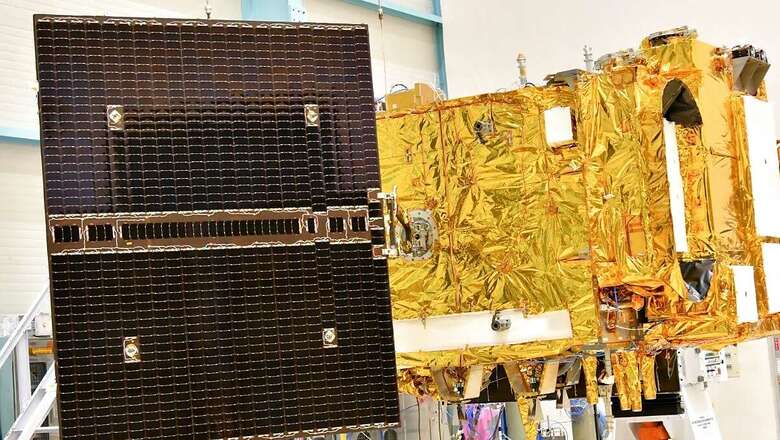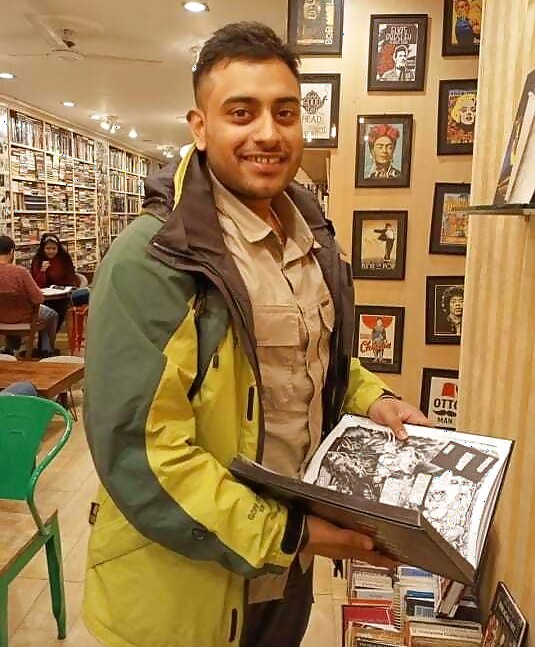
views
Aditya-L1 will be India’s first space-based Indian mission to study the sun, which is the most important source of life on earth. The speciality of the ambitious mission is that it will spin at a point called the ‘Lagrange point 1’ (L1) between the earth and sun, said research scholar Jonmejoy Sarkar, who is studying the made-in-India Solar Ultraviolet Imaging Telescope, or SUIT payload, being developed by Inter-University of Astronomy and Astrophysics in Pune.
Speaking to News18 precisely two hours after the successful landing of Chandrayaan-3 on the moon, Sarkar explained a bit on ISRO’s next mission to the sun. “I am extremely happy. Many of my friends and colleagues have worked with Chandrayaan-3. It’s nice to see India reaching the surface of the moon,” the research scholar said from his home in Pune. He is a research scholar at the department of physics in Assam’s Tezpur University and his subject is the SUIT payload for Aditya-L1.

“Aditya-L1 is a scientific mission to observe the sun and its speciality is that it will spin at a point called the Lagrange point 1 (L1) between the earth and sun. The point is not actually in the middle, rather very close to the earth as compared to the sun that is 150 million km from the earth and the Lagrange point is 1.5 million km away. That is four times the distance of the moon from earth. Aditya-L1 is going to the Lagrange point from where it can observe the sun all the time. If it’s a satellite, then it will go round the earth, in such a case it will face the sun once and, at one point, be completely obscured. But when we place it between the sun and earth and make it spin at the point (L1) then it will continuously see the sun. Its movement will be like a planet and not a satellite, and it will mainly be observing the sun’s activity,” he said.
Sarkar further said the sun is a dynamic object, which cannot be realised from here as the brightness appears constant. “But from a research point of view, there is a lot happening inside the sun and that needs to be explored. Whatever happens in the sun affects our life on earth,” he said.
The research scholar said the spacecraft will be placed in a halo orbit around the Lagrange point 1 of the sun-earth system, which is about 1.5 million km from earth. It will then have the major advantage of continuously viewing the sun without any occultation or eclipses, and provide a greater advantage of observing solar activity and its effect on space weather in real time, he said.
The spacecraft will be carrying seven payloads to observe the photosphere, chromosphere and the outermost layers of the sun (corona) using electromagnetic and particle as well as magnetic field detectors, Sarkar said. Using the special vantage point L1, four payloads will directly view the sun and the remaining three will carry out in situ studies of particles and fields at the Lagrange point L1, thus providing important scientific studies of the propagator effect of solar dynamics in the interplanetary medium, he added.
“I was a member of the Solar Ultraviolet Imaging Telescope payload. It is supposed to observe the sun in near ultraviolet light. It has a big impact on climatic contribution. My involvement was in the integration and calibration of the instrument after the manufacturing of all the parts. My responsibility is to access, test and place the parts in the complete SUIT payload. All the payloads have been integrated into the Aditya satellite,” Sarkar said.
The SUIT, developed by Inter-University Centre for Astronomy and Astrophysics (IUCAA), has been delivered to the Indian Space Research Organisation (ISRO). This is expected to provide the most crucial information to understand the problem of coronal heating, coronal mass ejection, pre-flare and flare activities and their characteristics, dynamics of space weather, propagation of particles and fields among others.
Here are the major scientific objectives of Aditya-L1 mission:
- Study of solar upper atmospheric (chromosphere and corona) dynamics
- Study of chromospheric and coronal heating, physics of the partially ionised plasma, initiation of the coronal mass ejections, and flares
- Observe the in situ particle and plasma environment providing data for the study of particle dynamics from the sun
- Physics of solar corona and its heating mechanism
- Diagnostics of the coronal and coronal loops plasma like temperature, velocity and density
- Development, dynamics and origin of coronal mass ejections (CME)
- Identify the sequence of processes that occur at multiple layers (chromosphere, base and extended corona), which eventually leads to solar eruptive events
- Magnetic field topology and magnetic field measurements in the solar corona
- Drivers for space weather (origin, composition and dynamics of solar wind).
On Wednesday, ISRO chief S Somanath announced that the Aditya-L1 mission to study the sun will most probably be launched in the first week of September. “Aditya-L1’s mission to study the sun will be launched soon. We’re planning to launch it in the first week of September. Everything is going as per plan. This launch will go to an elliptical orbit and from that it will travel to the L1 point, which will take 120 days,” Somanath said.
Sarkar, who completed his masters from Tezpur University and is presently pursuing his doctorate studies, said his thesis is on the integration and testing on Aditya-L1. He owed his progress to his university and its teaching faculty, who have been a constant guidance to him.
“The observatory of the university has been a great help to push myself ahead,” he added.
Chayan Dutta, an alumnus of the department of electronics and communication engineering at Tezpur University, is presently overseeing the launch control operations of Chandrayaan-3.
Sarkar is the second person to make the university proud. His further job on Aditya-L1 will be to calibrate and study all the information sent by the satellite.




















Comments
0 comment